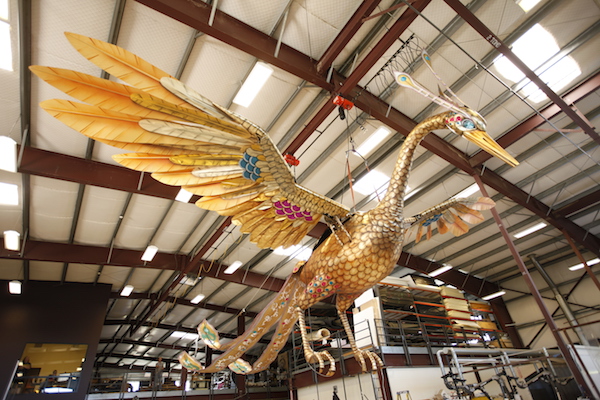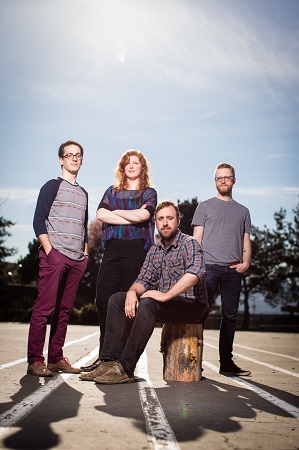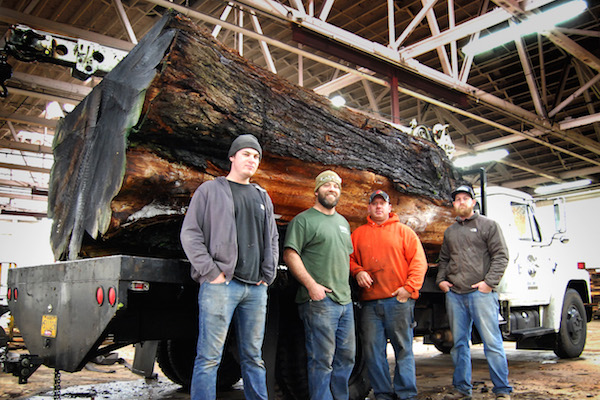written by Sophia McDonald | photos by Jen Jones
Picture the Columbia River Gorge in April. Slate skies overhead dumping rain. Green water racing through the river bed. Freezing winds whipping through the narrow canyon at speeds that blow cars askance.
Then imagine standing solo on a diminutive wooden platform mounted over the Columbia River, holding a 4-foot-wide hoop net with a 14-foot-long handle, landing one squirming salmon at a time from the icy water. Kim Brigham Campbell spends much of her spring—and summer and fall—on these scaffolds. She and her sister, Terrie Brigham, are following in the footsteps of four generations who have caught salmon from boats and scaffolds, first at Celilo Falls and later at the abandoned locks that give Cascade Locks its name.
Fishing for salmon is both a vocation and a way to stay in touch with cultural traditions for these members of the Confederated Tribes of the Umatilla Indian Reservation. “Salmon was one of our first foods, so it’s very important to us,” Brigham Campbell said. The first salmon caught by Native fishers during the year must be kept for ceremonial needs, including rituals at births, namings and deaths. Once its longhouses are stocked, a designated amount of salmon goes into home freezers for sustenance. After that, fishers can sell what they catch.
Some years the fisheries provide plenty of salmon, and some years everyone’s take is meager. On the Columbia River, “this is a down year for Coho, but we are expecting really big fall Chinook returns this year,” said Chris Kern, deputy fish division administrator for the Oregon Department of Fish and Wildlife. But not far away, on the coastal area north of Manzanita, there will be no Coho this season and a very short Chinook season.
Such extreme fluctuations in the salmon population date back to the end of the nineteenth century. The non-Native people who settled the Pacific Northwest overfished rivers and the Pacific Ocean, driving some salmon species to extinction. Dams built along the Columbia and Snake Rivers further endangered salmon health, as did new weather patterns brought about by climate change. Efforts by United States and tribal governments, commercial and sport fishers, environmental groups, energy generators and other stakeholders have improved the health of fisheries, but restoring them to their previous bounty remains a challenge.
If there’s a spring fishing season, it typically starts in March. If there’s a fall season, it can stretch through November. June and July are the peak time for catching Steelhead, Sockeye, Coho and Chinook. Brigham spends most of her time in the summer months piloting a 24-foot boat, from which she hopes to catch 1,000 pounds of salmon a day.
The Brigham family is known for proper care of its fish, she said. As soon as the salmon come out of the water, they’re killed, bled and iced. “If you get the blood out of the fish it’s not going into the meat and making it soft,” Brigham said. “You get a better quality product.”
Most of their salmon end up at the Brigham Fish Market, the family-owned store that retails wild-caught fish by the Brigham family and other Natives. Inside the small shop, Brigham Campbell and her crew clean each fish and prepare it for sale. Any fillets that aren’t sold fresh are smoked or frozen for later sale. Nothing goes to waste. Backbones are scraped for meat for salmon patties; eggs are set aside for fish bait; heads and bones are boiled for stock.
Passing the fishing tradition on to a sixth generation is important to the sisters. Brigham Campbell makes time to work the scaffolds every day. She’s often joined by her kids or cousins. Brigham’s children have already picked up their mother’s love of being on the boat. “Some days are perfect out there,” Brigham said. “Some days you’re getting tossed around and getting bumps and bruises, but there’s nothing like it.”
Brigham Campbell’s grandmother liked to eat fish eyes. There isn’t much demand for those today. Instead, her siblings and parents enjoy salmon prepared simply: just a little salt and pepper before baking or frying. “Our dad has always stressed that you have to taste the food you’re eating,” she said.









